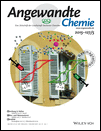Emulsion Ripening through Molecular Exchange at Droplet Contacts
Abstract
Two coarsening mechanisms of emulsions are well established: droplet coalescence (fusion of two droplets) and Ostwald ripening (molecular exchange through the continuous phase). Here a third mechanism is identified, contact ripening, which operates through molecular exchange upon droplets collisions. A contrast manipulated small-angle neutron scattering experiment was performed to isolate contact ripening from coalescence and Ostwald ripening. A kinetic study was conducted, using dynamic light scattering and monodisperse nanoemulsions, to obtain the exchange key parameters. Decreasing the concentration or adding ionic repulsions between droplets hinders contact ripening by decreasing the collision frequency. Using long surfactant chains and well-hydrated heads inhibits contact ripening by hindering fluctuations in the film. Contact ripening can be controlled by these parameters, which is essential for both emulsion formulation and delivery of hydrophobic ingredients.




